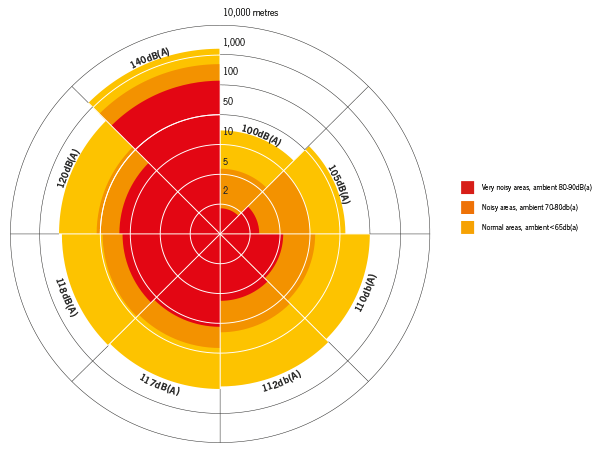Understanding Decibels
Sounders, sirens and alarm units are usually specified in decibels – more specific in dB(A)@1m. This is typically how loud a sounder is at a distance of 1 meter. The further away you are from this sound source, the weaker the sound gets. Under normal atmospheric conditions, the sound reduces with 6 dB when you double the distance to the sounder. So practically, a sound source of 100 dBA@1m will be 94 dBA at 2m, 88 dBA at 4m and so on.
When selecting an alarm, sounder or siren, you also need to take into account the background noise. In order to be effective, your alarm sound needs to be 5 to 10 dB above the background noise. The below graph is a very practical guideline. Each segment is showing a sounder or alarm with a specific SPL (Sound Pressure Level). Take for example a sounder with an output of 118 dB(A)@1m (the 8 o’clock position on the graph). The data will show you that this is a good choice for a very loud background noise of 80-90 dB(A) up to distances of around 20 m. If the background noise is 70 to 80 dB(A), this sounder will be effective up to 50 m, and up to 100 m when the background noise isn’t exceeding 65 dB(A).

Courtesy E2S